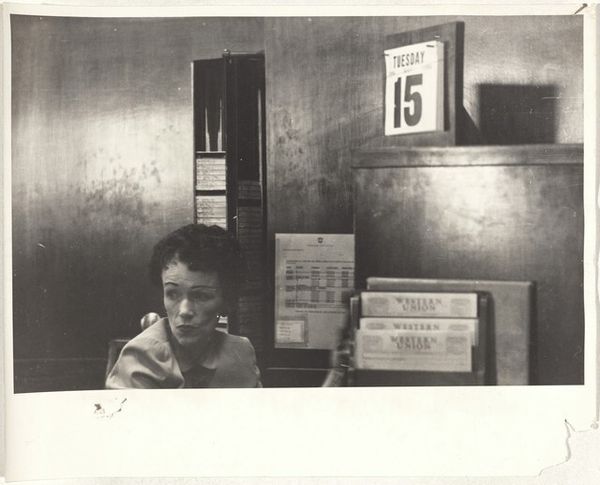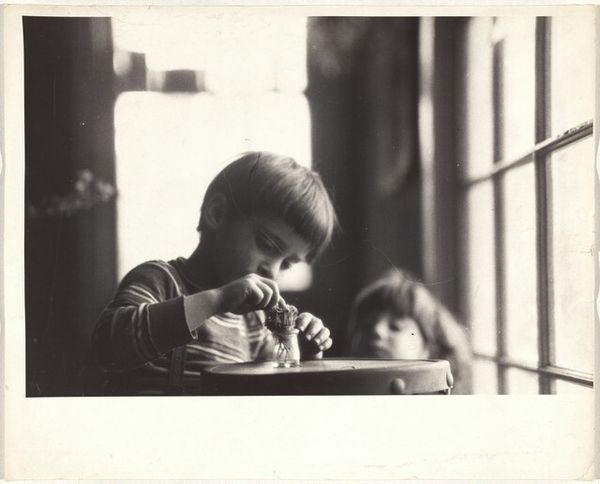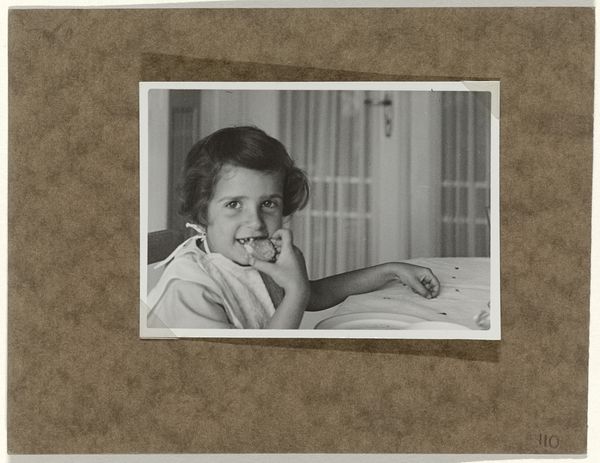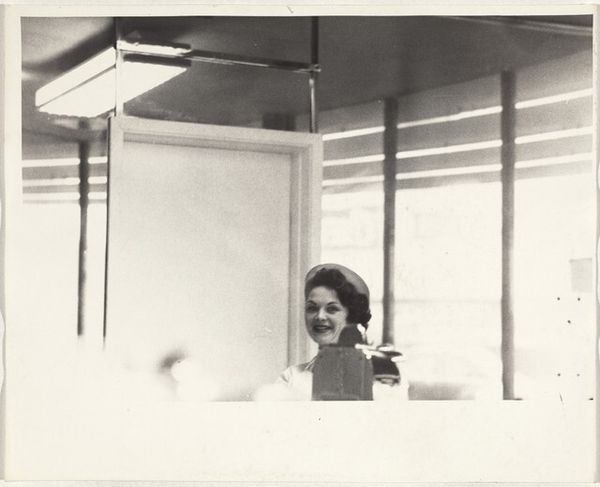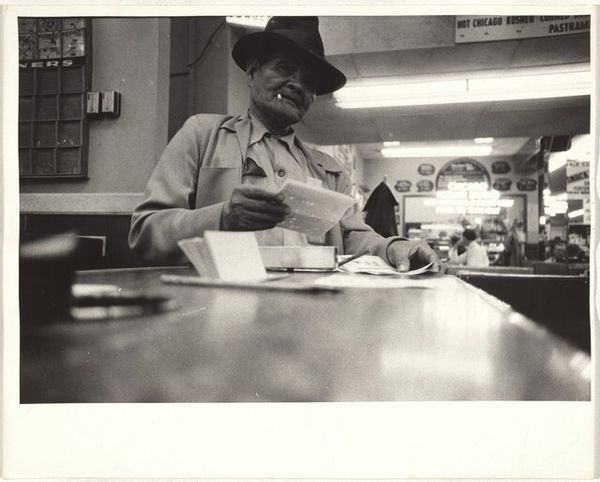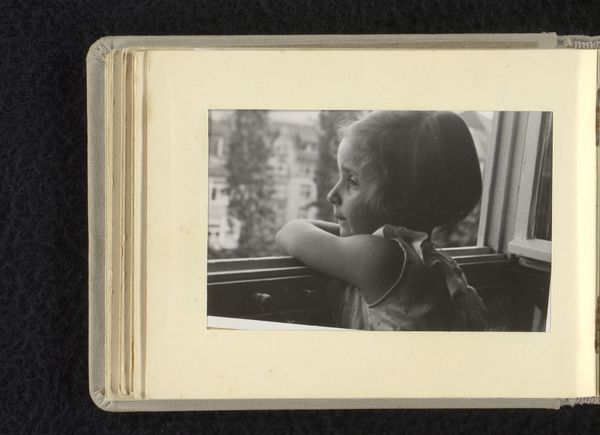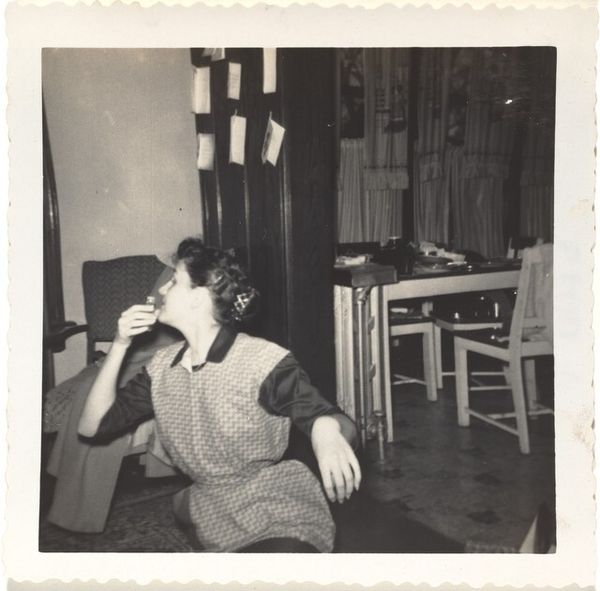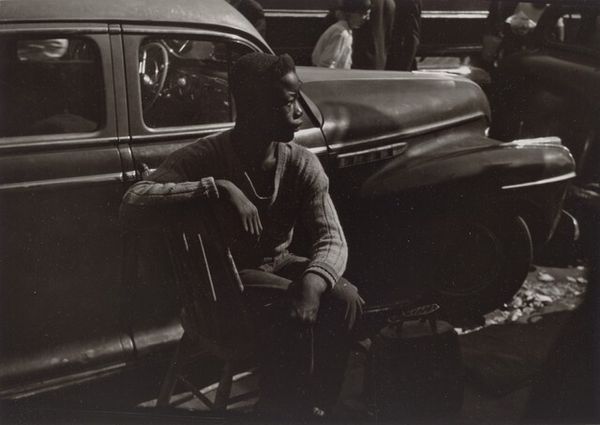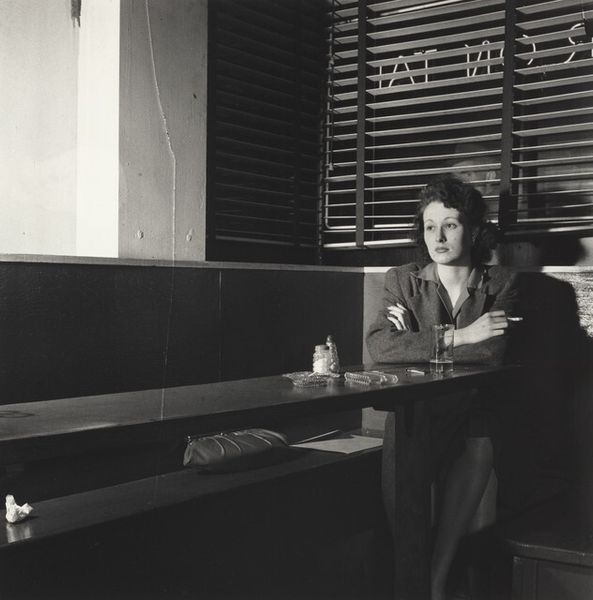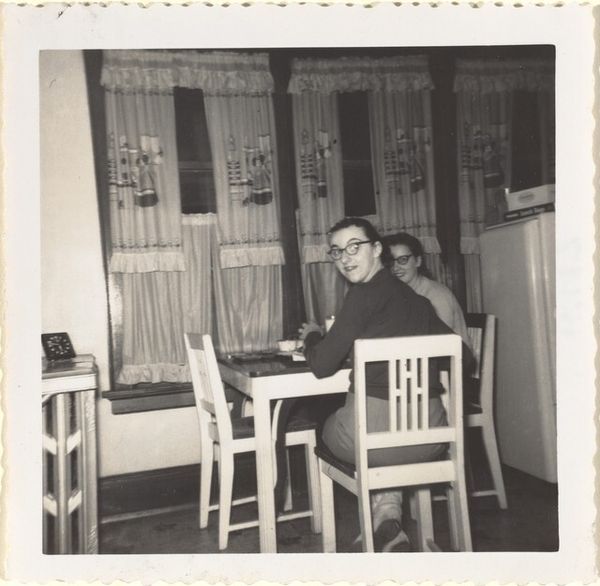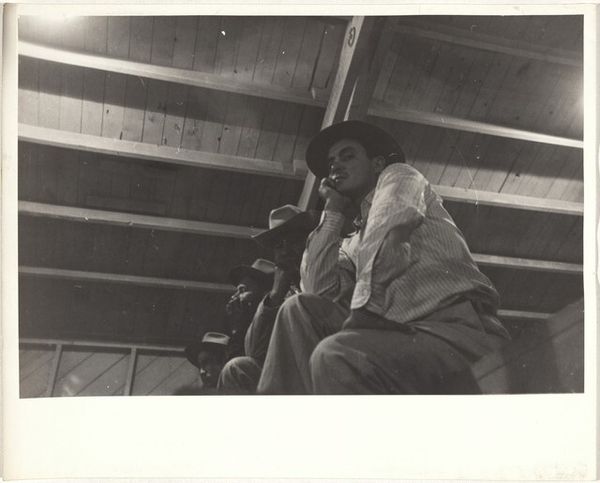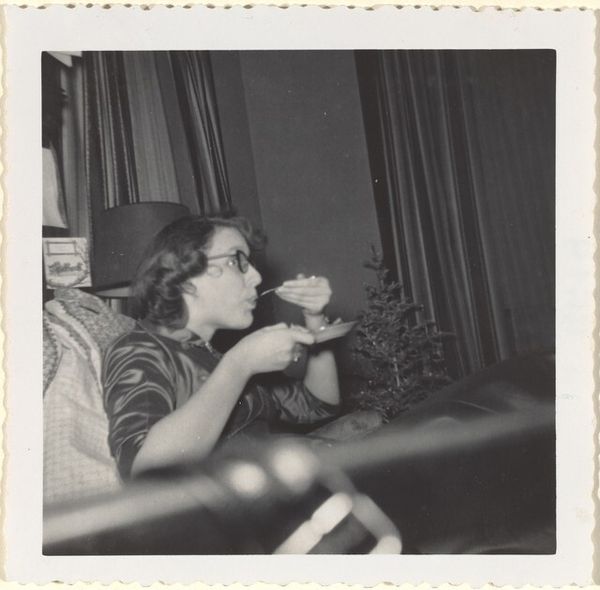
print, photography, gelatin-silver-print
portrait
print photography
social-realism
street-photography
photography
historical photography
gelatin-silver-print
modernism
realism
Dimensions: sheet: 20.4 x 25.3 cm (8 1/16 x 9 15/16 in.)
Copyright: National Gallery of Art: CC0 1.0
Editor: This is Robert Frank's gelatin silver print, "Waitress--Houston, Texas", from 1955. I’m really struck by the woman’s gaze; it feels like she's looking beyond the counter, dreaming almost. What catches your eye in this work? Curator: I’m immediately drawn to the photograph’s structural components. Notice the strong diagonal formed by the counter’s edge, slicing through the frame. This compositional choice divides the space, creating a tension between the woman and her environment. Editor: Yes, it does seem to create a separation, almost like she's isolated despite being at work. Curator: Precisely. Now, consider the tonal range – the contrast between the bright counter and the shadowed background. The composition seems carefully arranged to create a certain unease in an otherwise seemingly candid street portrait. Editor: So you're seeing the harsh blacks and stark whites as a key element? Curator: Indeed. The high contrast heightens the drama, transforming a mundane scene into something more psychologically charged. Furthermore, examine the deliberate graininess and slightly blurred focus. How does that contribute? Editor: It feels raw and immediate, less staged and more…real. It isn’t sharp and polished, but feels kind of honest in a way. Curator: And that ‘honesty’, as you call it, can be understood as part of Frank’s formal approach. He eschewed the conventional, perfectly composed photograph for a more gritty and immediate aesthetic that reveals a different facet of everyday life. His images thus capture something overlooked: what’s ordinary. Editor: That's fascinating, looking at it from a formalist perspective, rather than just as a slice of life. I am so used to looking at meaning and context that thinking about form in itself creates such interesting considerations. Curator: Ultimately, our interpretation circles back to those fundamentals of shape and tone. I'm delighted that you've now got some extra tools with which to engage in more readings.
Comments
No comments
Be the first to comment and join the conversation on the ultimate creative platform.
